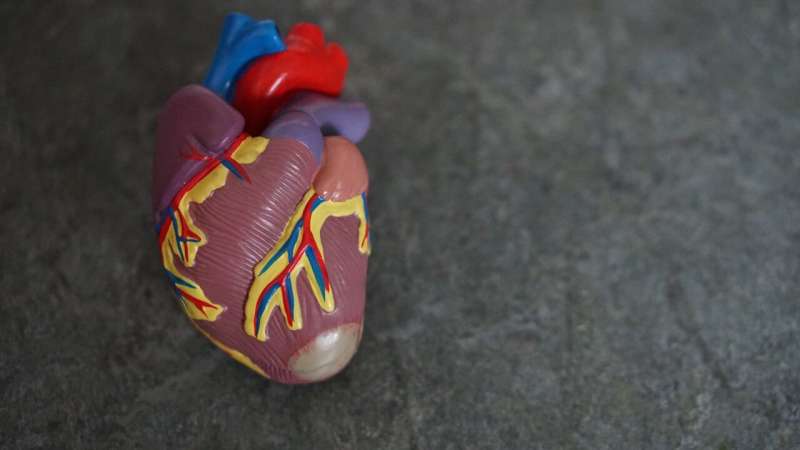New study provides insight for how congenital heart defects manifest

About one percent of the world population is born with a congenital heart defect, which affects about 40,000 U.S. births each year, but how these particular birth defects come about is largely unknown.
In an effort to learn more about how the heart develops, researchers at the University of Maryland School of Medicine (UMSOM) have determined that the cells lining the heart direct the cardiac muscle to grow until the heart reaches its full size. They also outlined the complex mechanism that regulates this process, which requires two sets of brakes to be bypassed for the heart to develop properly.
The researchers say these findings explain a bit more about what can go wrong during development that can lead to heart birth defects and may also help develop better techniques for regenerating heart tissue.
"To recover from disease, you need to figure out how to do heart regeneration. At this time, no one can regenerate an entire heart, mostly because they have been focused on using the heart muscle to grow more heart muscle cells," said Deqiang Li, Ph.D., Assistant Professor of Surgery at the University of Maryland School of Medicine in the Center for Vascular & Inflammatory Diseases. "Our findings suggest that we may need other cells from the heart, such as the epicardium (the cells lining the heart), to give the necessary instructions for the heart muscle to grow bigger."
The mechanism the team described was published on June 20 in Circulation Research.
The gene regulator histone deacetylase 3 (HDAC3, for short) was known to be important for development in the heart muscle cells, but whether it played specific role in the separate layer of cells lining the heart was unknown. To explore the role of HDAC3 in heart development, the researchers genetically engineered mice to lack HDAC3 only in the cells lining the heart. In fetal mice, they found that these hearts without HDAC3 in the heart lining had thinner, compact walls in the heart's ventricles—basically, it seemed like the hearts did not grow enough.
The research team determined that the cells lining the heart without the gene regulator HDAC3 also made less of two growth factors that these cells normally pump out to encourage heart growth, while also making too much of two microRNAs. MicroRNAs are small pieces of genetic material that control what genes are turned on and made into proteins.
"We were struggling in putting the pieces together for this mechanism for a long time. One day Postdoctoral Fellow and lead study author Jihyun Jang, Ph.D., approached me and expressed the brilliant idea of double brake mechanisms of the microRNAs preventing the growth factors from being made, which eventually turned out to be true!" said Dr. Li. "We would not have been able to complete this study without valuable contributions and insights from our co-authors, as well as support from the Department of Surgery and the Center for Vascular and Inflammatory Diseases."
Separately, they found that HDAC3 turns off genes that code for the two microRNAs, which allows the growth factors to be generated and ensures the heart grows to full-size.
"You may ask, why use such a complicated strategy that requires traversing two double brakes to get a normal heart to develop? Well, gene regulators like HDAC3 are found in every cell in the body, and microRNAs are also found everywhere. These specific regulatory hurdles allow this process to be specialized to various places in the body. Of course, that also means that these cell mechanisms may have applications for other diseases, as well, like cancer," said Dr. Li. "To some people, this mechanism and these findings may seem incredibly detailed. If you think about life though, details matter. If one little thing messes up, then everything messes up."
E. Albert Reece, MD, Ph.D., MBA, Vice President for Medical Affairs, University of Maryland, and the John Z. and Akiko K. Bowers Distinguished Professor and Dean, University of Maryland School of Medicine, said, "One of the health conditions that I have spent much of my career studying is the mechanisms behind structural birth defects. Basic research, such as performed in this study, is essential for us to find out how the body develops normally, so that we can determine what goes wrong in disease, and ultimately one day, in this case, we can find ways to prevent congenital heart defects in the next generation of newborns."
More information: Jihyun Jang et al, Epicardial HDAC3 Promotes Myocardial Growth Through a Novel MicroRNA Pathway, Circulation Research (2022). DOI: 10.1161/CIRCRESAHA.122.320785





















